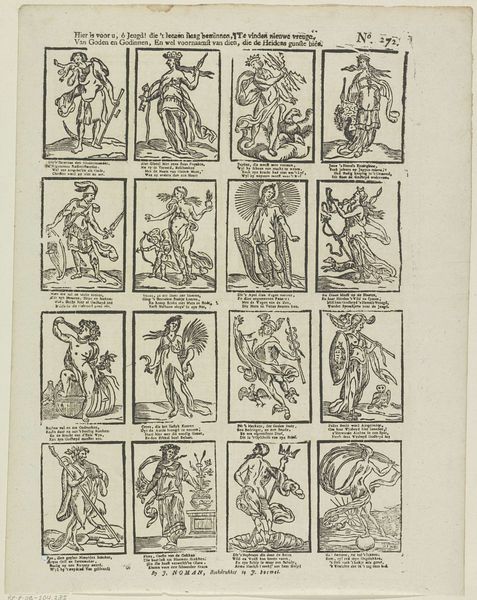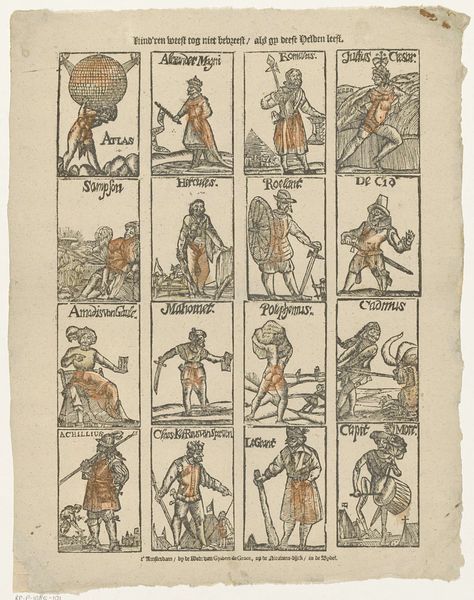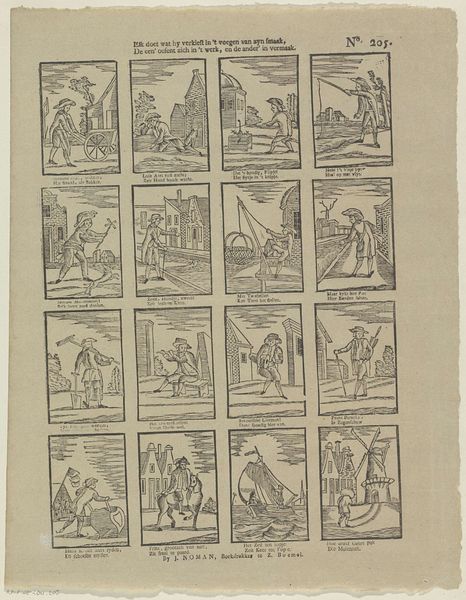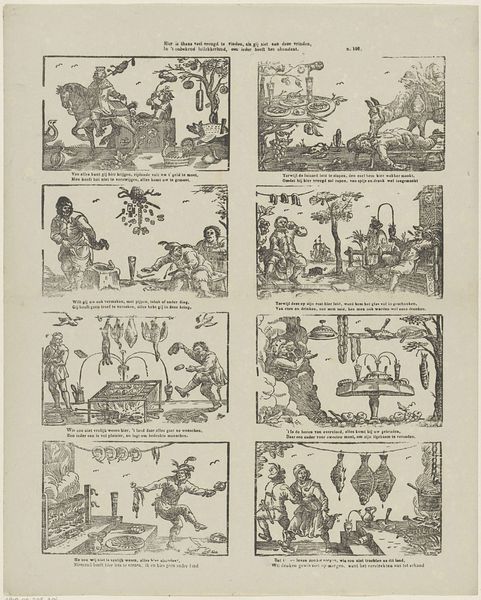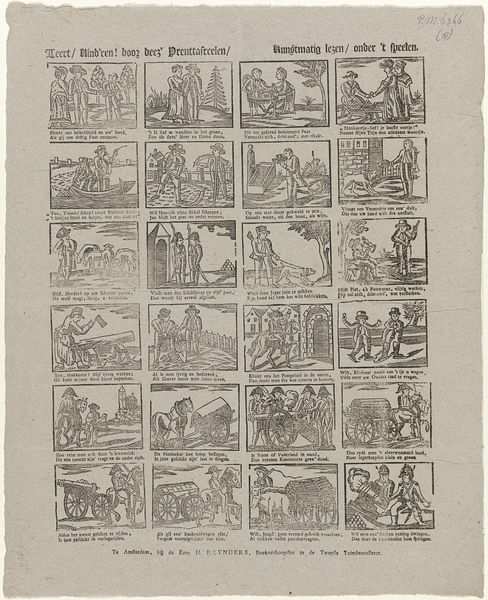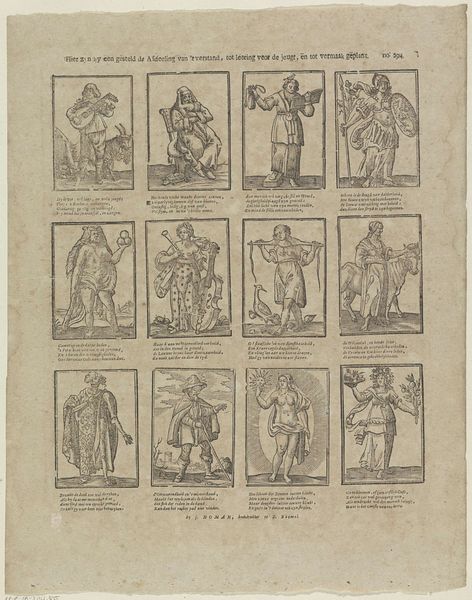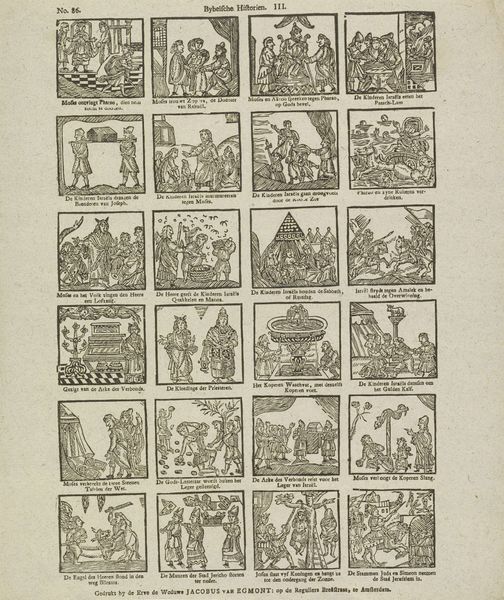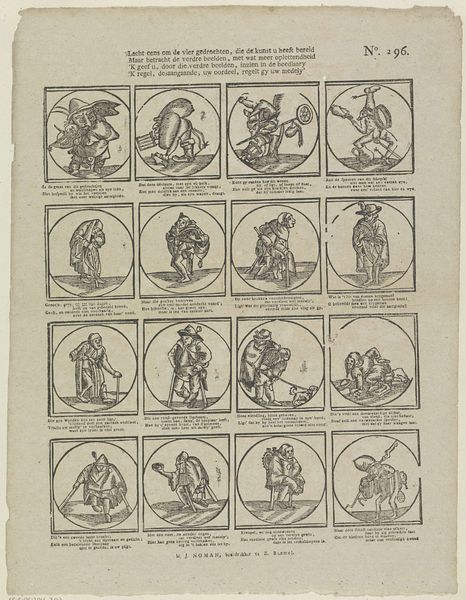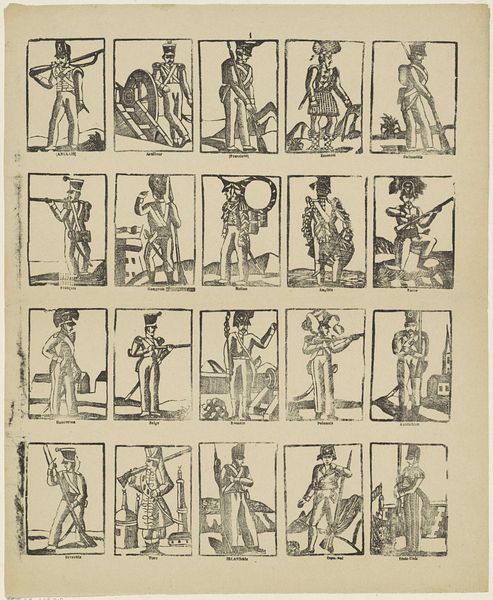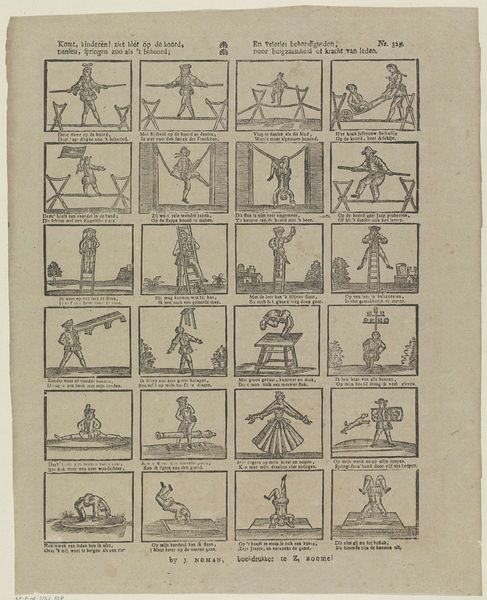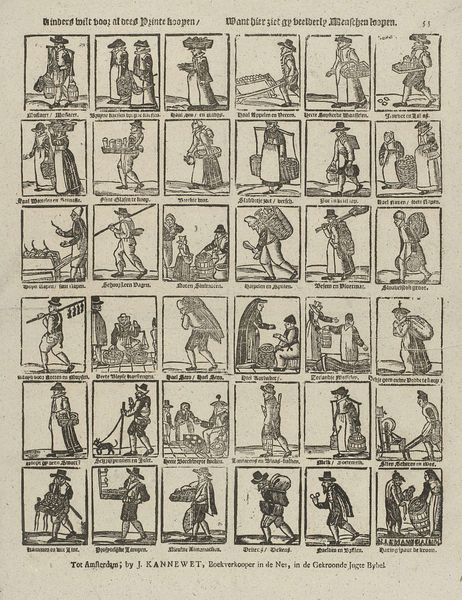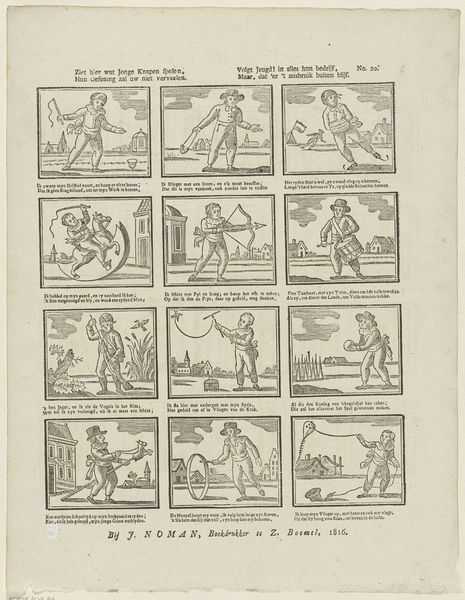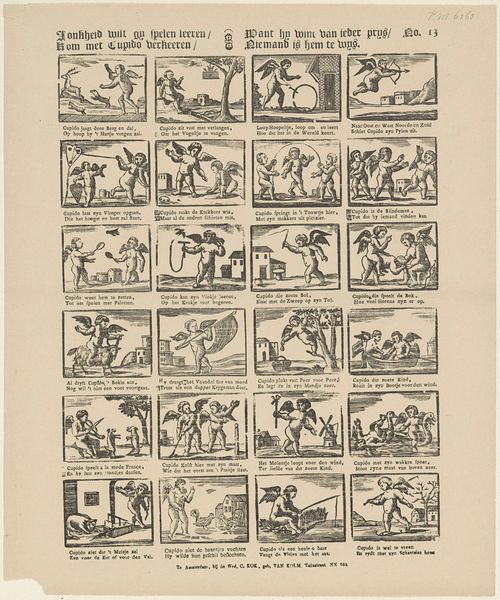
print, woodcut, engraving
#
narrative-art
# print
#
figuration
#
woodcut
#
history-painting
#
northern-renaissance
#
engraving
Dimensions: height 393 mm, width 312 mm
Copyright: Rijks Museum: Open Domain
Curator: What strikes me first is its grid-like presentation of various figures, it feels almost like a set of playing cards from a deck telling tales of valour. Editor: Indeed, what we're looking at is entitled "Vorsten, Helden en Reuzen," which translates to "Princes, Heroes and Giants." It's believed to have been created between 1806 and 1830 by Johan Noman. The techniques used were woodcut and engraving. It's now part of the Rijksmuseum's collection. Curator: I see all these characters crammed into small boxes and feel a slight disconnect from them. They're legendary figures but somehow appear flattened, devoid of individual power. Like postage stamps commemorating myths! Editor: That flattening, as you call it, is really interesting given its context. These types of prints would have circulated amongst the literate middle class, creating a shared visual vocabulary around heroism and national identity. Curator: So, the point wasn't necessarily the detailed portrayal of any single hero, but the collective idea of greatness, distributed widely? Makes sense, and slightly subversive actually. Instead of these powerful stories reserved for monarchs, regular folks could consume them, paste them in albums… become experts of greatness, so to speak. Editor: Exactly! Imagine entire groups poring over prints like this, debating the merits of Romulus versus Julius Caesar, crafting their own notions of what constitutes a prince, a hero, or a giant in their time. The print serves as a social icebreaker in a way. Curator: I now see less flattening, more of an equalizer. Still, I can't help but wish some figures like Mahomet and Polyphemus were more sensitively drawn to prevent feeding on old, negative stereotypes, which back then, I suppose, was the common attitude in Europe. Editor: That’s precisely what makes studying these images vital. It’s an uncomfortable confrontation of history, prompting reflection on biases and assumptions baked into what might appear to be just an innocent historical woodcut. Curator: Agreed. "Princes, Heroes and Giants" opens a window not just to past legends, but also into the complex social, and even personal, landscape that helped define a particular era. A complex world for sure! Editor: I'm off to find my old Dutch history books... there might be something I missed in it.
Comments
No comments
Be the first to comment and join the conversation on the ultimate creative platform.
